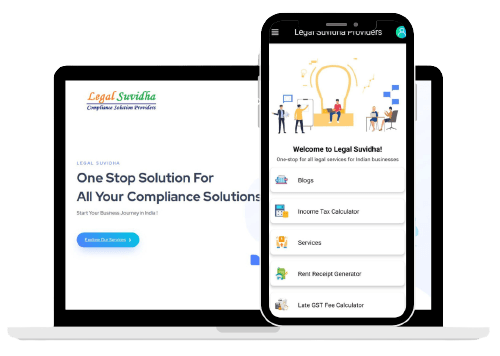ISO 27001: Information Security Management
ISO 27001: Information Security Management – A Simple Guide In today’s digital world, keeping sensitive information safe is more important...
Businesses pay taxes on their purchases, known as input tax credit (ITC), which they can use to offset their tax liability when making sales. This mechanism plays a crucial role in the functioning of the tax system and ensures that taxation is equitable and efficient. Input tax credit allows businesses to deduct the taxes they’ve already paid on the inputs or raw materials used in the production process from the taxes they owe on the final product. This prevents the double taxation of goods and services, which would otherwise inflate prices and hinder economic growth.

Happy Clients
Years Experience

Happy Clients
Years Experience
Input tax credit refers to the tax paid by a person who has a GST registration on the supply of goods or services, which includes central tax (CGST), state tax (SGST), integrated tax (IGST), or cess. This credit is used to reduce the tax liability when a sale is made. However, the tax paid on the composite taxation scheme is not included in input tax.
The Goods and Services Tax Act is based on the principle of value addition, and the tax liability is levied on the value added at each stage of the supply chain until it reaches the consumer. To avoid the cascading effect of tax liability on procurement of raw materials, consumables, plants, machinery, etc., businesses are allowed to offset the tax liability through input tax credit.
Every person with a GST registration in the supply chain collects and remits the GST tax to avoid double taxation and the cascading effect of tax. By utilizing the input tax credit mechanism, businesses can achieve neutrality in the incidence of tax and ensure that the input tax element is not included in the cost of production or supply of goods and services.
| Reduced Tax Liability | ITC allows businesses to claim credit for the tax paid on inputs used in the production of goods or services. This reduces the overall tax liability of the business |
| Cost Savings | ITC eliminates the cascading effect of taxes, which means that businesses are not required to pay tax on tax. This results in cost savings for the business, making goods and services more affordable for the end consumer |
| Increased Efficiency | The ITC system promotes transparency and efficiency in the supply chain as businesses are required to maintain proper records of input tax credits claimed and utilized. This reduces the chances of tax evasion and helps streamline the tax compliance process |
| Boosts Competitiveness | By reducing the tax burden on businesses, ITC makes them more competitive in the marketplace. This encourages businesses to invest in new technology, machinery, and infrastructure, which ultimately leads to increased productivity and economic growth |
| Encourages Compliance | The ITC system incentivizes businesses to comply with the GST regulations as only those businesses that are registered and compliant with GST can claim input tax credits. This helps bring more businesses under the tax net, increasing tax revenues for the government |
Step 1: Verify Input Tax Credit Claims-
The first step is to verify the ITC claims made in the GST returns against the purchase records and invoices.This involves checking if the supplier has reported the supply and if the recipient has reported the receipt of the supply.
Step 2: Reconcile Mismatched Data-
If there is a mismatch in the data, the next step is to reconcile the differences by communicating with the supplier and obtaining the correct invoices or rectifying the errors. This involves reconciling the data between GSTR-2A (auto-populated data) and GSTR-3B (self-assessed data) forms.
Step 3: Rectify Discrepancies-
Once the discrepancies have been identified and reconciled, the taxpayer can rectify any errors in the previous returns through GSTR-1 and GSTR-3B amendments.
Step 4: Claim ITC-
After the reconciliation and rectification process is complete, the taxpayer can claim the ITC in their GSTR-3B return for the relevant tax period.
Step 5: Audit and Compliance-
It is important for taxpayers to maintain proper records and documentation to support their ITC claims and be prepared for any audit or compliance checks by the tax authorities.
1. An invoice issued by the supplier of goods or services
2. An invoice issued by the recipient of goods and services supplied by an unregistered dealer, which falls under the reverse charge mechanism
3. A debit note issued by the supplier if the tax charged is less than the tax payable for such supply
4. A bill of entry or similar documents for integrated tax on imports
5. An invoice or credit note issued by an input service distributor according to GST rules
6. A supply bill from a dealer who has opted for a composition scheme, an exporter, or a supplier of exempted goods
7. As a registered taxable person, it is important to maintain proper records of these documents in order to claim ITC and reduce overall tax liability
Taxes paid on inputs are subtracted from taxes that must be paid on output in the event of an input tax credit.
Yes. The tax owed on reverse charges is included in the definition of input tax. If such products and/or services are used, or are intended to be used, in the course of or in advancement of his business, he may use the credit.
ITC is only available for products and services used for business. ITC cannot be claimed if they are utilised for non-business (personal) purposes or to create exempt supplies.
A registered person may request a refund of unused input tax credits at the conclusion of any tax period, per Section 54(3) of the CGST Act, 2017. The time frame for which a return must be filed is known as a tax period.
#answer
#answer
#answer
#answer
With a commitment to exceeding expectations and a passion for delivering results, choosing us means choosing a partner dedicated to your success.

We provide free of cost consultation and legal advice to our clients.

We are a team of more than 15+ professionals with 11 years of experience.


All our services are online no need you to travel from your place.

There are no hidden & extra charges* other than the quote/invoice we provide.

We aim that all our customers are fully satisfied with our services.

We value your time and we promise all our services are delivered on time.

We provide free of cost consultation and legal advice to our clients.
In this Journey of the past 14+ years, we had gained the trust of many startups, businesses, and professionals in India and stand with a 4.9/5 rating in google reviews.We register business online and save time & paperwork.
Trustindex verifies that the original source of the review is Google. Mayank & the Legal Suvidha team are fantastic. They really try to understand the business like insiders and don't give you templatized solutions. The staff are extremely supportive and go out of their way to help you. I would recommend Mayank to anybody new to the startup ecosystem!Trustindex verifies that the original source of the review is Google. Great experience with smooth process during the startup india registration Excellent coordination and teamwork with effective implementation in very limited timeTrustindex verifies that the original source of the review is Google. Sound expertise, good coordination, efficient and timely execution.Trustindex verifies that the original source of the review is Google. Good service and very helpfulTrustindex verifies that the original source of the review is Google. We had a great experience working with the LegalSuvidha team - we have used them for both our Pvt Ltd and LLP formation and their team has been very proactive, knowledgeable, prompt and helpful. They helped with all DSCs as well and couriered them to us. Very professional and thorough. We also got our Startup India , MSME registrations through them promptly. Overall highly recommended. Special callout to Nidhi, Saloni, Anjalin, Shreya and Priyanka for promptly helping us throughout the process.Trustindex verifies that the original source of the review is Google. I am writing to thank you for the quality of service provided by your company. We sincerely appreciate your efficient, gracious customer service, the level of detail and accountability you have demonstrated and the way you conduct business as a whole. A special Thanks to Ms Saloni for her great help throughout.Verified by TrustindexTrustindex verified badge is the Universal Symbol of Trust. Only the greatest companies can get the verified badge who has a review score above 4.5, based on customer reviews over the past 12 months. Read more


Explore more of our blogs to have better clarity and understanding
of the latest corporate & business updates.
ISO 27001: Information Security Management – A Simple Guide In today’s digital world, keeping sensitive information safe is more important...
Operating an online store comes with numerous benefits—but also regulatory obligations. Securing the right licenses and permits is essential to...
Directors shape a company’s governance and strategic direction. Among board members, Executive Directors and Non‑Executive Directors (NEDs) play distinct yet...
The Articles of Association (AOA) form the backbone of a company’s internal governance, setting out the rules, rights, and responsibilities...
Selecting the optimal legal form is a critical decision when launching your U.S. venture. Both LLCs and Corporations offer liability...
Expanding your U.S.-based business into India unlocks access to a vast consumer market, a skilled workforce, and cost advantages—but also...
Here are some answers to potential questions that may arise as you start your business.
Register your business, obtain necessary licenses, and fulfill tax obligations.
Consider factors like ownership, liability, and tax implications to choose from options like sole proprietorship, partnership, or company registration.
Choose a unique business name, obtain required IDs like Director Identification Number (DIN), and file incorporation documents with the Registrar of Companies (ROC).
Obtain GST registration, trade licenses, and any industry-specific permits required to operate legally.
Maintain accurate financial records, file tax returns on time, and adhere to the tax laws applicable to your business.
Yes, startups in India can benefit from various government schemes offering tax exemptions, funding support, and incubation facilities.
Secure patents, trademarks, or copyrights to safeguard your intellectual assets from infringement or unauthorized use.
Challenges include navigating bureaucratic hurdles, complying with complex regulations, and competing in a crowded marketplace.
Looking For More Information? Contact Us
Sign up to receive email updates on new product announcements, special promotions, sales & more.
Redefining the experience of legal services. Now all Professional Services in a Single Click !


Copyright © 2025 Legal Suvidha Providers LLP. All rights reserved.
